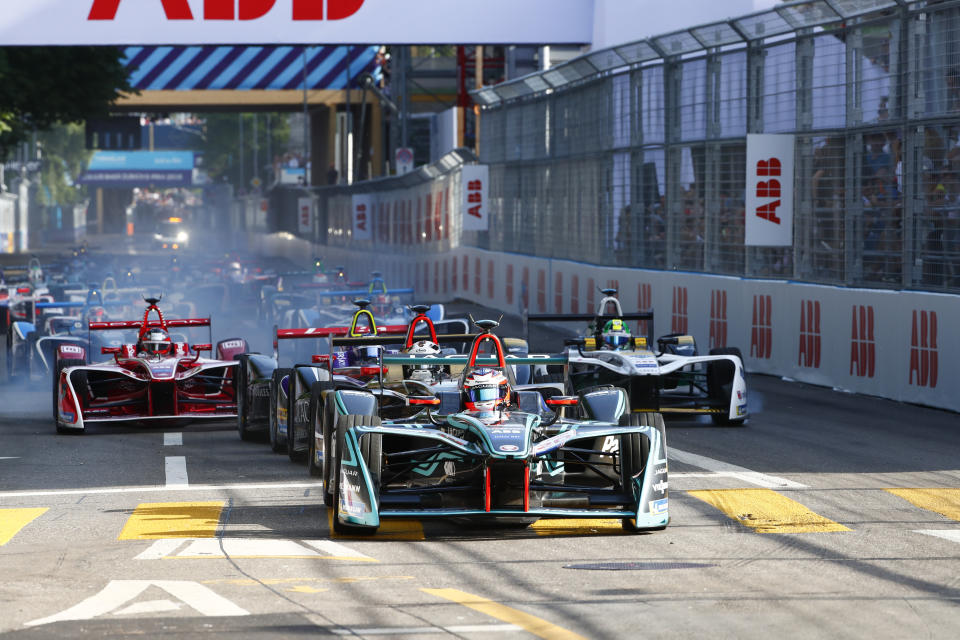Why Jaguar and other carmakers are flocking to Formula E
This weekend the electric racing league, Formula E, ends another big season with its finale in New York City. It’s year four of the league, and its only gotten bigger — with more races, and more teams.
The league already counts manufacturers like Jaguar (TTM), Audi (VOW.DE), Renault (RNO.PA), and India’s Mahindra (MAHMF). But joining next year will be huge marques like BMW (BMW.DE), Porsche, and Nissan (NSANY).
Having your logo plastered on race cars is good business, and it’s been happening for quite awhile. But with electric racing, automakers are benefitting from showing consumers that they have the tech and know-how to take electric cars to the next level, and it’s also a testing ground for them to develop new tech.

For Panasonic Jaguar Racing Team Director James Barclay, the automaker’s entry into Formula E was a no brainer. “For us it was really about looking as a brand, we’ve always had a huge history in motorsports, and we wanted to return to the sport,” he says. “The timing for us was perfect, bringing out the all-new Jaguar I-PACE this year, our first battery electric road car; it was the perfect opportunity to use Formula E as a platform to tell the world that we have an electric car coming.”
And that Jaguar I-PACE all-electric vehicle is coming soon, in fact it will be here faster than electric cars from rivals like Mercedes and Audi. It’s that perfect timing, and the platform of Formula E, that Jaguar can use to promote its tech, racing heritage, and new cars.

Jaguar I-PACE (Credit: Jaguar)
Let’s also not forget that racing is basically a lab, a place to experiment with new technology, that eventually trickles down to road cars. “It’s that technology transfer from the race track to the road that we are really passionate about,” Barclay says. Je recalls that it was Jaguar that developed the first disc brakes in the 1950s for racing that eventually made its way to almost every road car today.

Jaguar expects cutting edge, racing innovation will make it back to its new electric road cars too. “We’re pushing [the technology] to its absolute maximum limit in a racing environment, and we see a lot of real-world, test-bed learnings if you will from Formula E that we can ultimately bring to our production car and make even better cars for our consumers.”
That innovation test bed is also helping Formula E itself evolve too. Soon there will be a 2nd generation car, dubbed “Gen2,” that will be faster and have enough battery capacity to run an entire race distance (currently drivers have to swap cars mid race due to battery limits).

It’s been a great season for the Panasonic Jaguar team, capturing its first pole this year and a podium. Check out the New York City ePrix this weekend to see how Formula E season finale goes, and if a first win is in the cards for Barclay and his Jaguar team.
—
Pras Subramanian is a reporter for Yahoo Finance. You can follow him on Twitter and on Instagram.
Related stories:
Jaguar I-PACE: Designer Ian Callum breaks down his electric sensation

 Yahoo Finance
Yahoo Finance 
